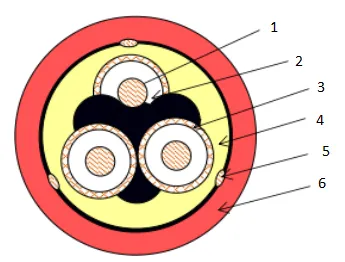nov . 29, 2024 21:02 Back to list
Cost of Knife Gate Valves and Market Trends Analysis
The Price of Knife Gate Valves Understanding the Factors and Market Trends
Knife gate valves are essential components in various industrial applications, particularly in wastewater treatment, mining, and pulp and paper industries. Designed to handle thick fluids and slurries, these valves are instrumental in ensuring efficient flow control and isolation within piping systems. However, as industries seek to optimize their operational costs, understanding the pricing structure of knife gate valves has become paramount. In this article, we explore the factors influencing the price of knife gate valves, current market trends, and tips for making informed purchasing decisions.
Factors Influencing Price
1. Material Composition The material from which a knife gate valve is constructed significantly impacts its price. Common materials include stainless steel, carbon steel, and various alloys. Stainless steel valves, known for their corrosion resistance, tend to be more expensive than their carbon steel counterparts. Furthermore, specialized coatings or linings can add to the cost, as these materials enhance durability in harsh environments.
2. Size and Specifications Valve size is a critical determinant of price. Larger valves require more materials and machining processes, leading to higher costs. Additionally, the specifications regarding pressure ratings, end connections, and special features (such as manual or automated actuation) will further affect pricing.
3. Manufacturer Reputation The reputation and experience of the manufacturer play crucial roles in the pricing of knife gate valves. Established brands with a history of producing high-quality, reliable products often command higher prices due to perceived value and trustworthiness. However, newer manufacturers may offer competitive pricing to gain market share, which can influence overall market dynamics.
4. Market Demand and Supply The basic economic principles of demand and supply also affect the price of knife gate valves. In periods of high demand—say, due to increased construction projects or mining activities—the prices may surge. Conversely, in times of low demand, manufacturers might lower prices to maintain sales volumes.
5. Customization and Special Features Many applications require customized knife gate valves tailored to specific operational needs. This customization can include unique designs, specialized materials, or additional features such as extended stems or mounted actuators. Customization invariably leads to higher prices due to the additional engineering, labor, and materials involved.
Current Market Trends
knife gate valve price

The market for knife gate valves is evolving, driven by advancements in technology and changing industry needs. Automation is becoming increasingly prevalent, with more facilities adopting automated valve systems for enhanced control and efficiency. As a result, knife gate valves equipped with actuators and control systems are witnessing a rise in demand, influencing pricing structures.
Moreover, there is a growing emphasis on sustainable practices, particularly in water treatment and management industries. This trend is prompting manufacturers to develop valves that minimize environmental impact while maintaining performance standards. These eco-friendly innovations may come at a premium, reflecting the rising costs associated with sustainable manufacturing processes.
Making Informed Purchasing Decisions
When investing in knife gate valves, it is essential to consider not just the price but also the overall value. Here are some tips for making informed purchasing decisions
1. Assessing Product Life Cycle Evaluate the long-term performance and maintenance requirements of the valve. Sometimes, a higher initial investment in a durable valve can lead to lower life cycle costs.
2. Comparative Shopping Obtain quotes from multiple suppliers to compare prices and features. This practice ensures you get the best value for your investment.
3. Reviewing Specifications Carefully Ensure that the valves meet your specific application requirements. Sometimes, opting for a more expensive, high-quality valve can save costs in repairs and replacements down the line.
4. Considering Total Cost of Ownership Beyond the purchase price, examine the total cost of ownership, including installation, maintenance, and energy consumption.
In conclusion, the price of knife gate valves is influenced by a multitude of factors ranging from material and size to market dynamics and manufacturer reputation. As industries adapt to new technologies and sustainability demands, staying informed about these trends and conducting thorough research will empower companies to make savvy purchasing decisions in a competitive market.
Share
-
Y Strainers: Protecting Your Pipes with PrecisionNewsAug.27,2025
-
Wafer Type Butterfly Valves: Reliable Flow Control SolutionsNewsAug.27,2025
-
Wafer Type Butterfly Valves: Essential Components for Efficient Flow ControlNewsAug.27,2025
-
Reliable Flow Control with High-Quality Check ValvesNewsAug.27,2025
-
Reliable Flow Control with Gate ValvesNewsAug.27,2025
-
Innovative Check Valves for Reliable Flow ControlNewsAug.27,2025


